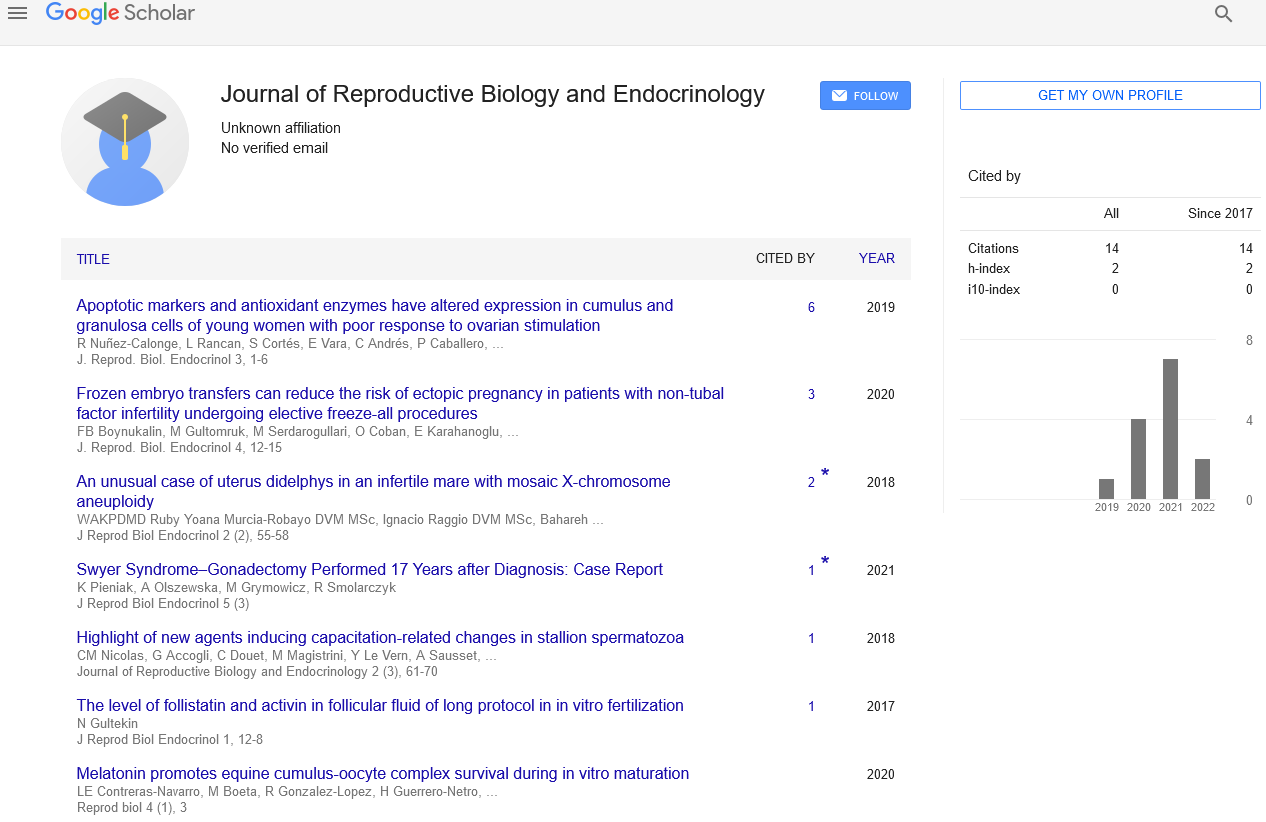Fertilization: And its effects
Received: 05-Jul-2022, Manuscript No. PULJRBE-22-5667; Editor assigned: 07-Jul-2022, Pre QC No. PULJRBE-22-5667 (PQ); Accepted Date: Jul 27, 2022; Reviewed: 21-Jul-2022 QC No. PULJRBE-22-5667 (Q); Revised: 22-Jul-2022, Manuscript No. PULJRBE-22-5667 (R); Published: 28-Jul-2022, DOI: DOI:10.37532/PULBECR .2022.6(4).2
Citation: Jason T. Fertilization: And its effects. J.Reprod. Biol. Endocrinol. 2022;6(4):2
This open-access article is distributed under the terms of the Creative Commons Attribution Non-Commercial License (CC BY-NC) (http://creativecommons.org/licenses/by-nc/4.0/), which permits reuse, distribution and reproduction of the article, provided that the original work is properly cited and the reuse is restricted to noncommercial purposes. For commercial reuse, contact reprints@pulsus.com
Abstract
Most invertebrates, like sea urchins, and non-mammalian vertebrates, such fish and amphibians, have spermatozoa that are fully capable of fertilizing eggs when they leave the testis. Mammalian testicular spermatozoa, on the other hand, lack this capability. They become more capable of fertilising as they move through the epididymis. The maturation of spermatozoa in the epididymis is referred to as this process, which appears to be "unique" to mammals. However, spermatozoa still need to go through a further stage of maturation or capacitation within the female genital canal before they may fertilise eggs. IVF was initially created as a way to get around a simple mechanical fallopian tube blockage, which prevents sperm from getting to the oocytes and, as a result, prevents embryos from getting to the uterus for implantation. Mature oocytes were removed from the ovaries by laparoscopy, cultured, and fertilized in vitro, and the resulting embryos were then transferred back to the patient's uterus for potential implantation. But by the early 1980s, it was clear that the methods might also be applied to treating infertility brought on by a variety of factors, such as male subfertility. The development of vaginal ultrasound-guided oocyte recovery techniques and improved superovulation medicines allowed the treatment cycle to be transformed into an outpatient procedure that may be performed safely and sucessfully
Key Words
Fertilization; Embryo; IVF
Introduction
Mature oocytes can be extracted from the majority of IVFpatients; nevertheless, about 25% of women who are referred for IVF treatment still have tuba1 blockage as their underlying disease. A mixed aetiology may include tuba1 obstruction, ovulatory or immunological diseases, cervical factors, coital issues, and endometriosis in about IN 55 20%1 of cases. 17% of couples experience "unexplained" infertility, meaning there is no known cause.Oocyte donation is dependent on the availability of willing donors, which is constrained in the majority of nations. Patients who are capable of producing mature oocytes for fertilization but are unable to carry a baby to term may benefit from IVF surrogacy, in which the patient's own oocytes are fertilized by her partner's sperm and the resulting embryos are transferred to a host. Successful IVF treatment necessitates meticulously planned cooperation, with each member of the team working toward the successful delivery of a live, healthy baby. Antiarchs have regularly been found to have the least crownward placoderms, making them extremely interesting in this context. However, nothing is known about their reproductive biology. Here, we demonstrate how some antiarchs have dermal claspers in the males and assisted copulation. Pelvic fins are not connected to these structures. The clasper shape is similar to that of the placoderm group known as ptyctodonts, which is more crownward. This suggests that all placoderm claspers are homologous and that internal fertilisation is a common feature of all placoderms. This suggests that, despite the fact that this change had previously been deemed impossible, external fertilisation, which is a feature of the majority of extant aquatic gnathostomes, and spawning are both descended from internal fertilisation. As an alternative, the strong morphological evidence against placoderm paraphyly needs to be disregarded.
Conclusion
The process of creating a new person is lengthy and complex, and it is susceptible to failure at any point. Each link in the chain is crucial, and each step can only be taken if the preceding ones have been appropriately completed. When Louise Brown was born in 1978, Patrick Steptoe said, "This is the first time we've solved all the problems at once." Not the beginning of the end, but the end of the beginning. Thousands of healthy children have been born thanks to the widespread use of IVF over the past 23 years, but many scientific and medical challenges and issues still need to be resolved while taking into account the relevant ethical considerations concerned





